Alesis SamplePad Pro – An Honest Review
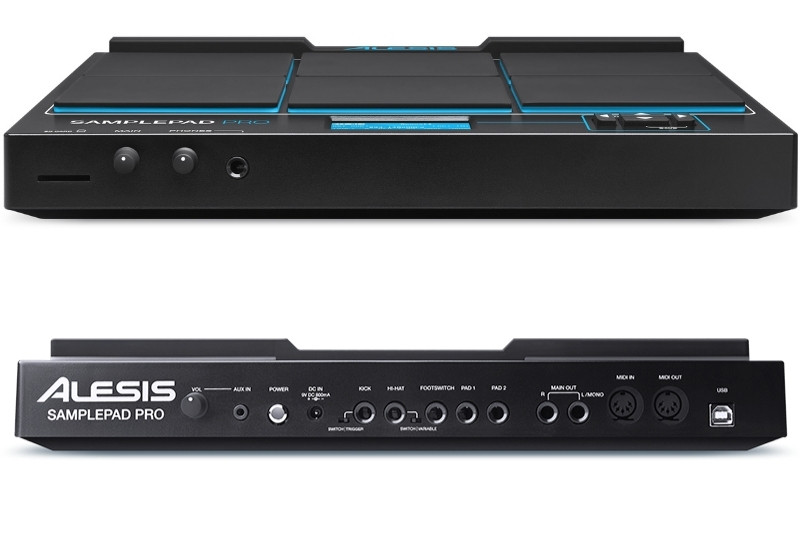
I used the Alesis SamplePad Pro for about 4 months, including live gigging. This review sums up my many opinions about the model and whether you should buy it or not.
Alesis entered the market as one of the first serious contenders to the major Roland and Yamaha sample pads. While doing so, they have finally offered a sample pad that’s affordable to a much wider base of musicians.
The overall result is a drum pad with some great features, but with a few annoying quirks.
These quirks can range from unnoticeable to quite hindering, depending on how you’re planning to use the sample pad.
Keep in mind, I have a lot of experience in using high-end sample pads. This is my personal opinion when comparing the SamplePad Pro against the best.
Let’s get into the details!
Contents
Overview – The Features
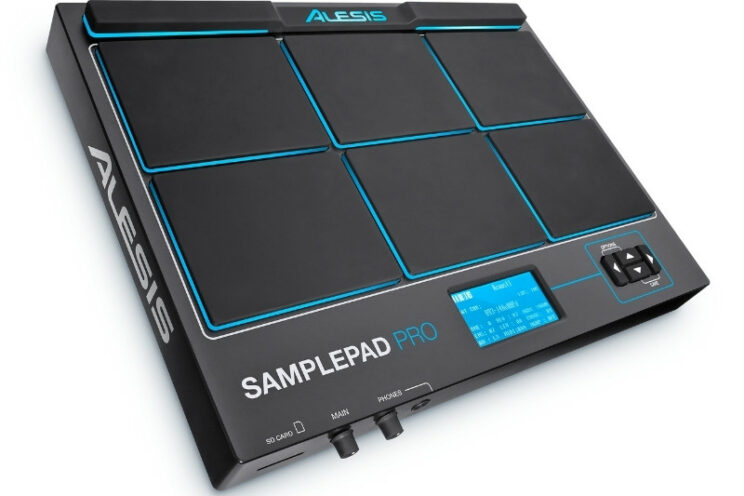
The Alesis SamplePad Pro contains eight drum pads. This includes six pads on the main face of the device, and two on each of the top corners.
These are velocity-sensitive, so they can detect some subtleties in your playing.
This sample pad contains many different in-built drum kits and sounds. These range from acoustic sounds, electronic hits, and world music to musical synth pads.
Very importantly, it also allows for custom sampling via an SD card, which is a very big plus.
You can extend this device and turn it into a mini drum kit, including a kick, hi-hat controller, and two additional pads. This leaves you with a great number of possibilities.
I recorded live hits from one of my acoustic drum sets and loaded samples of that onto this device. It worked fairly nicely, though I wasn’t amazed when using an external hi-hat controller.
Lastly, this pad looks great. The individual pads light up when hit. To be honest, I expected it to look tacky, but the effect is a nice one!
What can the SamplePad be used for?
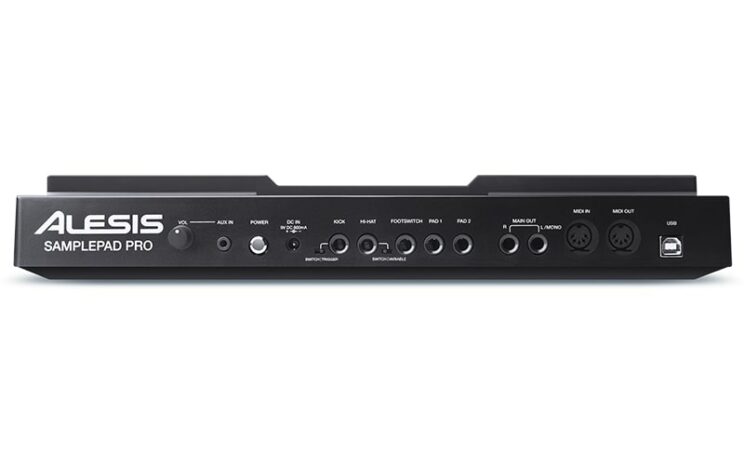
This is a very versatile device, it can be used as:
- A drum pad for practicing
- An addition to your drum set (e.g. a hybrid drum setup)
- A pad to internally hold and loop your custom samples
- A MIDI-Controller for other devices and DAWS (e.g. Ableton Live)
- A mini-drum kit by extending with additional pads.
The features of this device in some ways even outnumber that of Roland’s devices, if taken individually (e.g. The Roland Octapad doesn’t allow for custom sampling, the Roland SPD-SX has limited extensibility). So this can serve as a great first step in using sample pads.
Drawbacks – The Quirks
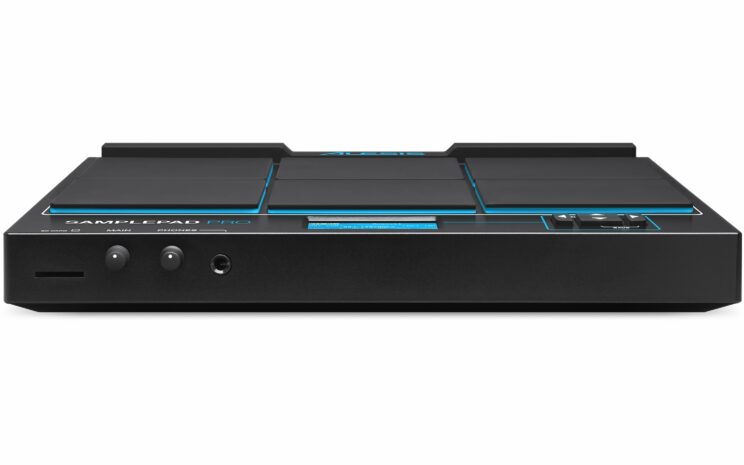
I’ve talked a lot about the wide features of the device. Let’s get into the issues!
Cross-talk: This was one of my biggest concerns with using the SamplePad Pro. A well-known issue with this model is that hitting one pad may trigger another.
In my case, hitting the top left shoulder pad would trigger another pad on the device.
This would be particularly problematic if you’re planning to launch long samples (e.g. pads with long chord progressions, bass lines, etc). Cross-talk could unexpectedly start or stop these samples at the wrong time.
Alesis did release a firmware update to tackle this issue. To be fair to Alesis, this does reduce the issue to some degree.
However, from using it, it feels like the firmware update just automatically reduced the sensitivity of the problematic pads. When I manually increased the sensitivity again, the cross-talk issues persisted for me.
Is cross-talk really an issue with this device? The answer is that it depends. You may have to avoid using the particular problematic pads if you’re looking for a lot of sensitivity in your playing. Otherwise, it might be fine.
Sensitivity: As a drummer, I do not think the SamplePad Pro measures up enough in terms of detecting subtlety, in comparison to the high-end Roland and Yamaha models. For example, if you play fast double-stroke rolls or rudiments with ghost notes, it just feels a little clunky to play.
Is that an issue? If you’re using this for more basic playing and drum beats, you might be fine. If you’re expecting this to respond like a snare drum for very fast playing (or an electronic mesh pad) then you might be let down.
Loading Time: Switching between kits on the device can take some time (particularly for bigger external samples). For live performances, this can be a bit of a hindrance. However, with enough planning, you can get away with it.
What is it like to play live?
I’ve used this for live gigging. To be honest, it wasn’t too bad. At times, I didn’t think the sensitivity was amazing but it’s a nice cheap option to use alongside a drum set or for a producer’s live performance.
For long-term playing, I’m not totally sure about the build quality. It’s relatively sturdy, but if you’re very heavily gigging then you might need a higher-end drum pad. For more information about those, check out my popular article on the best electronic drum pads.
Conclusion – Is the Alesis SamplePad Pro worth it?
The Alesis SamplePad Pro is an instrument with big features at an extremely reasonable price. It can serve as a good entry into electronic drum pads, but with some issues.
The high-end sample pads by Roland and Yamaha are quite expensive and therefore out of the price range for many people.
The SamplePad Pro is one of the only real alternatives in that market that have come anywhere close to these models (another alternative is the HXW PD705, which I liked and didn’t find many issues with, but others have reported some crosstalk issues with that pad too!).
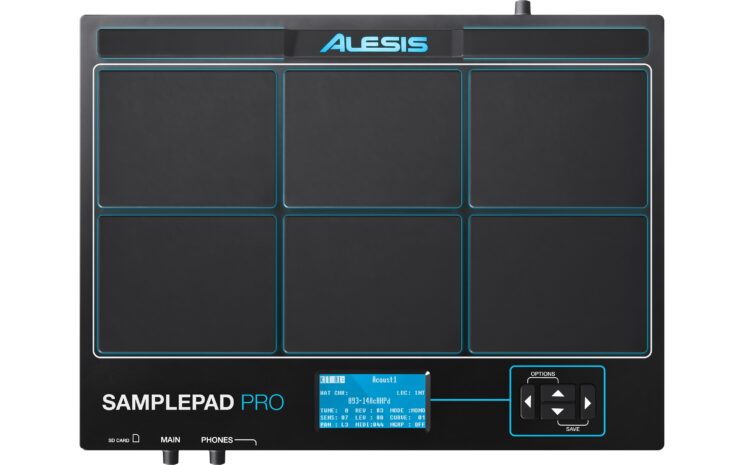
However, keep in mind the quirks of this device before buying.
The device has MIDI, extensibility, and custom sampling. If you get your hands on this, there is a whole lot to play with.
I hope you found this review helpful!
If you have any questions on the Alesis SamplePad Pro, then please write a comment below. I promise to answer all comments!
Images – Courtesy of Alesis


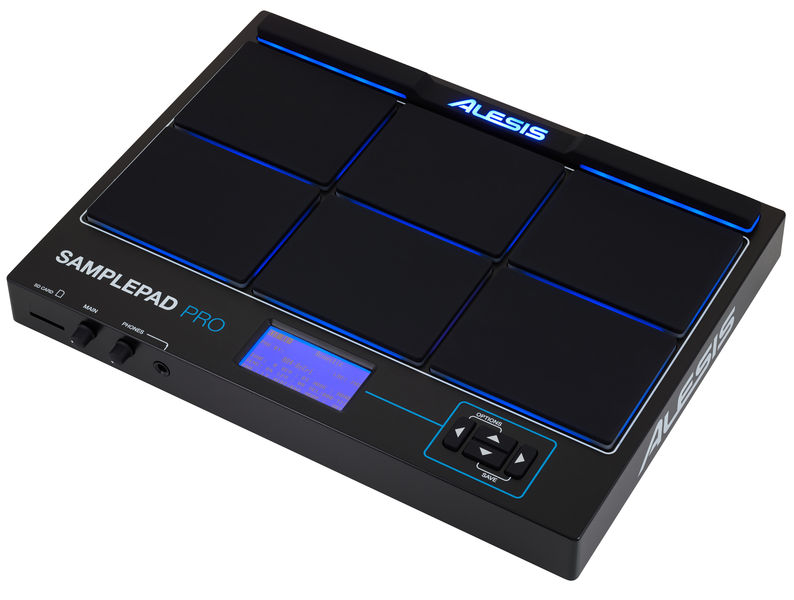

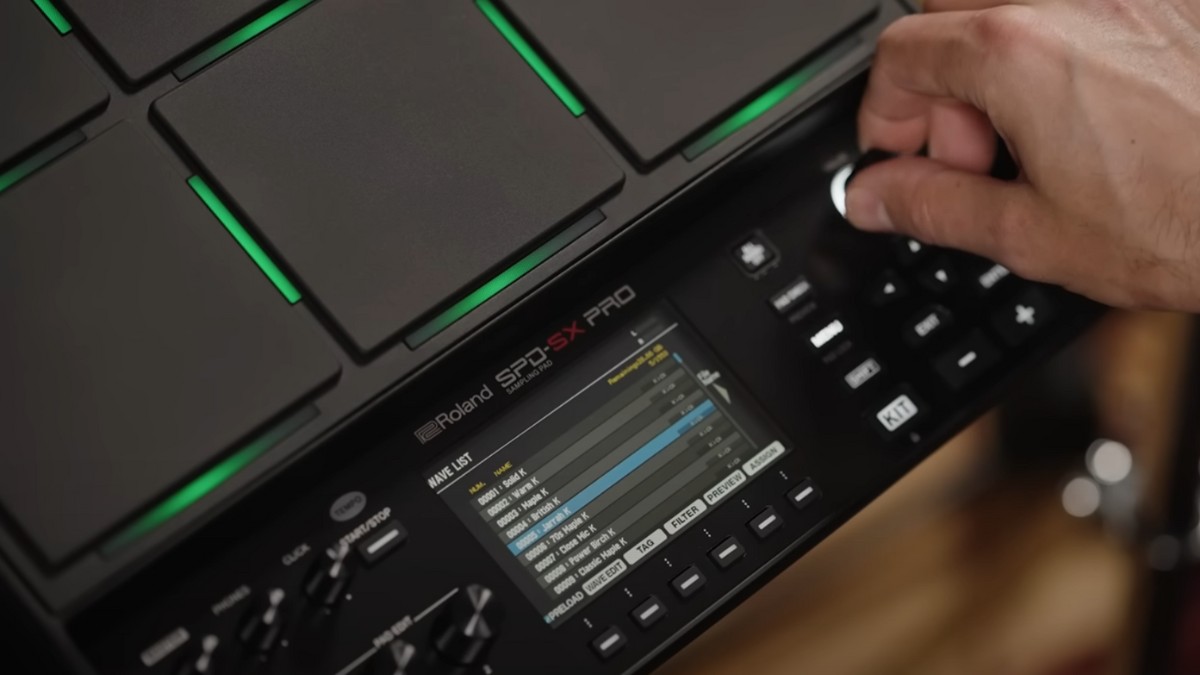
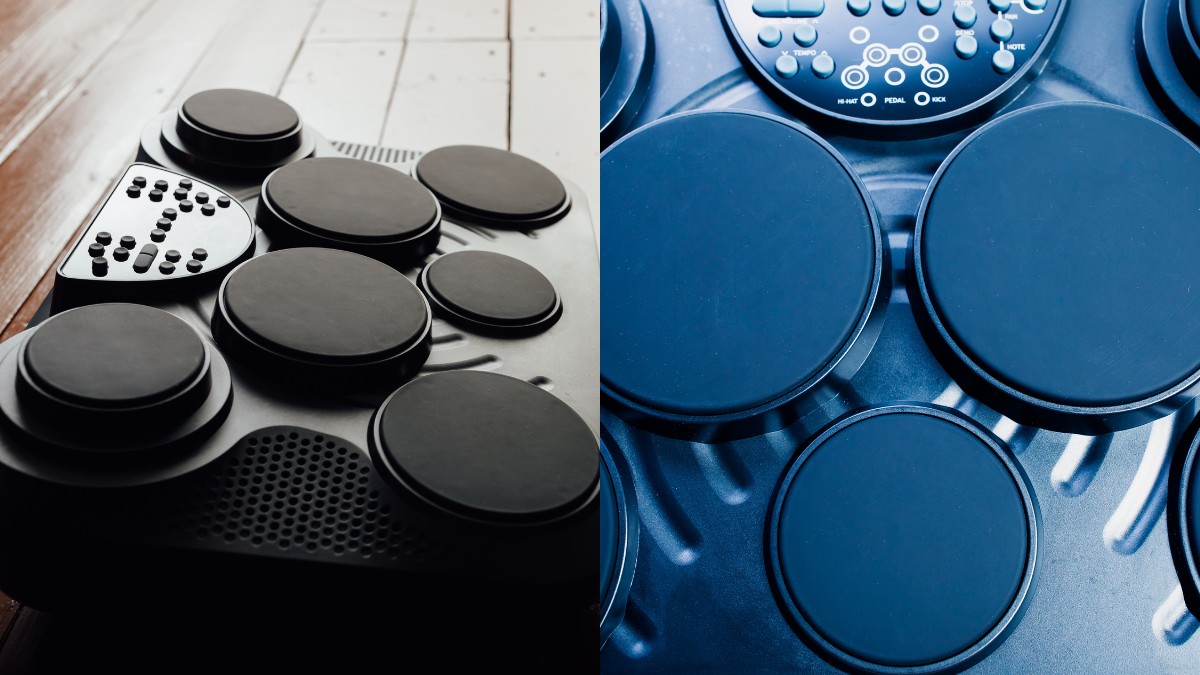
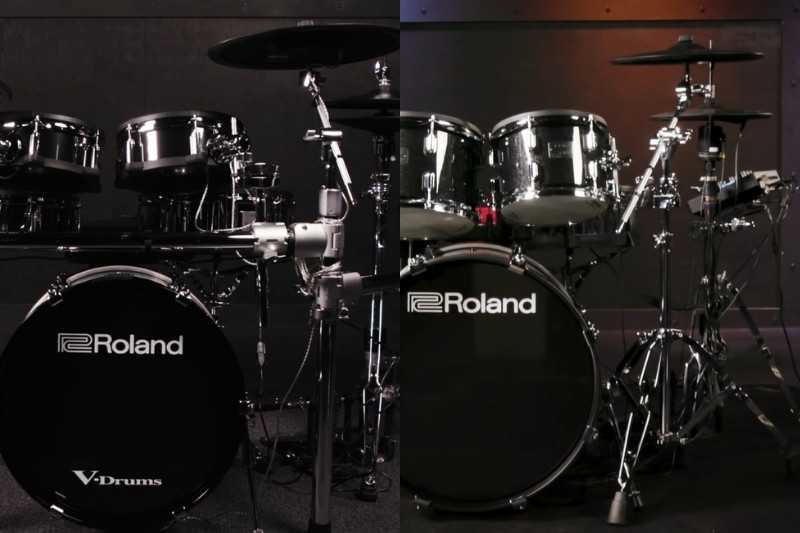
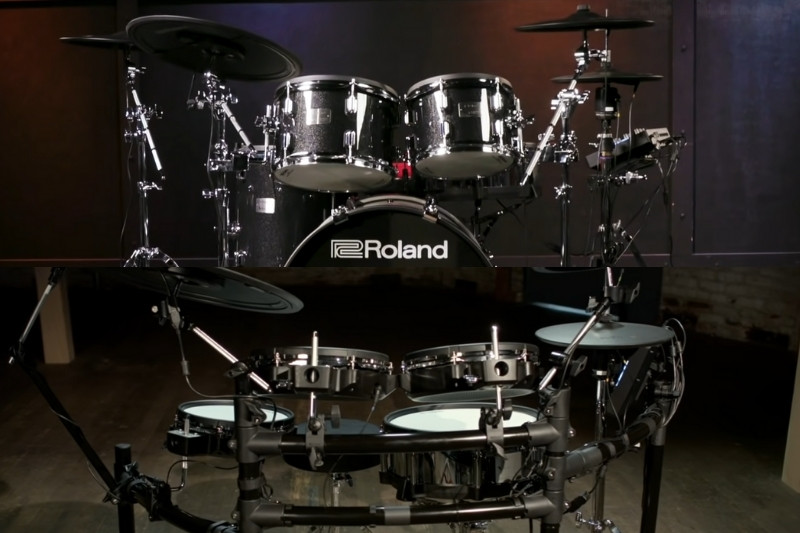



I am looking to purchase one between the Alesis Samplepad and the Alesis Samplepad Pro. I plan to use this for live gigging, mainly in church. I am African and I will be sampling a number of African percussion sounds (though I know that doesn’t matter). Unfortunately, I am currently unable to afford the higher end pads or else I would have gone with the Roland SPD-SX. If you would be kind enough to advise, which of these would you suggest, considering the downsides of the Samplepad Pro? Thanks in advance 🙂
Hey! By ‘Alesis SamplePad’, I assume you’re referring to the old legacy 4 pad samplepad. Personally, I would go with the SamplePad Pro for the following reasons: it has more pads and would allow you to play more sounds on the fly. It is newer technology, and the old samplepad had some anti crosstalk issues reported (if hitting two pads at the same time, it might stop one of them from being triggered). However, both models do allow you to load your own samples via an SD card, however I believe the old model only allowed mono samples, whereas the SamplePad Pro also allows stereo samples. If you have a very low budget, you could try out the original samplepad to see if it works for your needs, however I think it’s not a great option for live performances. Hope this helps!
I own a sample pad pro, have it for about two years, I bought it for my home studio because of the lack of space. I also use it live for small meetings where a drum kit would not be practicable it works reasonably well and as stated by others the delay between the banks needs to get use to. I’m in the caribbean so the pricing would be different but it is still reasonable. one has to look at the reviews, count the cost and know if it is worth buying;
Thanks for sharing your thoughts Dave!
I have puchased a sample pro paid but it’s memory card not working properly when I change kit then it not changing pls help me clear this problem
Hi Prakash, a few options to try:
– There might be an issue with the sample rates or file formats of the samples. Have a look at the response I sent Travis above for supported file types.
– Save the samples to your computer, reformat the SD card, and put the samples back on the Card.
– Try another SD card. Perhaps the SD card is faulty.
– Otherwise, it might be worth contacting the place you purchased the sample pad from, or Alesis support.
Hope that helps!
Mike how you are doing? After reading this, I have also bought sample pad pro. In my case it says sd card error. 1. Which sd is most suitable for it to buy? 2. The computer doesn’t shows midi signals when connecting it with a cable. Are. You familiar with this problem? Thank you
Hey – I think the SD card needs to be 32GB or less. If yours is lower than that and you’re having issues after going the below steps, then check the specs on the Alesis website.
Have you formatted the SD card to FAT32 format and placed your WAV files at the root of your USB key? That might be the solution.
Otherwise, have a look at my response to Travis below to see if that can help.
I am looking to by this for a gift for my husband. He is a guitar/bass player and has recently started writing his own music using GarageBand. He has shown interest in wanting to move beyond the basic drum tracks in GarageBand and learn to play a little drums on his own, but he doesn’t have the space for a full drum kit. So, would the Sample Pad Pro suit his needs and interface well with GarageBand?
Hi, yes, the SamplePad Pro is a decent option if he’s limited on space. However, if he wants to really learn drums then I’d recommend getting pedals as well, as otherwise he will only be able to play with his hands.
These would effectively turn it into a mini electronic drum set (you just hook them cables from the pedals into the back of the SamplePad), so it will be the best of both worlds. I’ve used the SamplePad in this way myself and it’s pretty decent.
I know these add a bit of extra expense, but if your budget is really limited then the SamplePad Pro by itself will still be a good starting point. After that, he could get a kick pedal later as then next most important thing, and then a hi-hat pedal after that.
Kick pedal (almost any cheap one will work)
https://amzn.to/2PDicCl
Hi-hat pedal:
https://amzn.to/2DLyN0g
For sure, it will be able to communicate to Garageband via MIDI connectivity. There are two options at the back, using either a USB printer type cable (this one for example: https://amzn.to/2PH7ElF) or using a 5-pin MIDI cable. He might already have one of these options.
There are also other options for recording the audio out of the device, so you can point him towards https://www.electronicdrumadvisor.com/record-electronic-drums/ for more information if he’s not sure. I’m sure he can look into that later himself!
Hope this helps and good luck with your gift shopping!
Mike
Any advice on setting it up/tuning it to get the best performance?
Hi Travis, my main tips would be:
Play around with sensitivity settings, and if you’re playing this live then do it with your live performance in mind. i.e. you might play pretty quietly when practicing and then smash the pad when playing live. This particular pad can lose a lot of dynamics if you set the sensitivity too high, so keep that in mind. Though it can be a trade-off between sensitivity and potential cross-talk (though this might only be the case in certain older models, I’m not sure about that), so test that a bit before performing!
The audio files that are supported are “16-bit, mono or stereo .WAV files. Sample rate of either 48K, 44.1K, 32K, 22.05K, or 11.025K.” There are plenty of audio utilities to convert your files to these. You can put these on an SD card and make sure to put them on the root folder of the card.
Regarding samples, try to keep the sample sizes relatively small if you’re planning on switching kits often between gigs. Big samples here can mean relatively long loading times between kit changes, but it’s fine if you can plan for it.
Switching between kits when using only the internal sounds is very fast, so that’s something else to keep in mind.
That’s about it, I hope that’s some use to you!
Mike, your opinion is very gentle… I have this item from a few months, but today finally I connect to my studio. Totally new item probably is broken. Low signal on audio output (Max. -25 dB), horrible time to loading samples… NOT FOR LIVE playing. And other minimalistic resolves, especially OS, like an device from 1980 year… disaster!!! I didn’t expect from Alesis so weak device. Additionally, I bought Forge Kit (problems with USB MIDI) and Alesis Dock II for iPad… not stable, GarageBand many time doesn’t work… I must restart iPad… I don’t know how this company exists on the market!!!??? Never Ever Alesis. This is mistake and big problems.
Hi Roman, thanks for sharing your opinions. Custom sampling loading time is a drawback for sure, particularly with bigger samples. Signal level on audio output was never a problem for me tbh, so that wasn’t a problem for me for live playing, but who knows how consistent that is between models. Worth checking if you still have a warranty on it, just in case you got a defective item. But even if not… the build quality, menu system, and overall sound certainly aren’t as good as higher end Roland/Yamaha pads… but it can come in at almost one third of the price of some of these. Though for people that are gigging seriously or doing serious recording, it’s probably worth waiting to invest in the higher end sample pads.
HEY! I’m a DJ and soon producer, but I would really love to add that live drum performance to my sets, do you recommend it for that case?
Hi Pablo, yes I think it’s a good option for DJs and producers if you’re looking for basic drum sampling, MIDI etc. As I’ve mentioned, there’s a few quirks, but you can get past them. If you’re looking for more advanced features on a bigger budget then the likes of the Alesis Strike Multipad, Roland SPD-SX, Octapad, or Yamaha Multipad are some other good alternatives.
Hi, i’ve been playing the Sample Pro for two years and never realized such big issues on crosstalking or delays. The problem i’ve got now is that Pad 7 is not working at all.
I tried to update the firmware but without any success. Any suggestion on how to fix this glitch?
Thx
Hi – unless the pad isn’t responding as a result of a setting (sensitivity, volume, sample turned off, etc), then I would expect that this is a hardware issue. Is the problem present on every kit? If you can connect it to a computer via MIDI, does the pad trigger a MIDI note (that might give an indication if the pad is completely dead, of if there’s a software or setting issue that’s not triggering the sound)? It’s probably worth contacting Alesis support to see if they can provide a solution.
Hello mike,
I want to use my Alesis SamplePad Pro to start and control live backing tracks on stage. The songs were cut in studio as an intro, verse, chorus, bridge, etc … and each part is assigned to a pad. So if the other live musicians want a double chorus on stage, then this is still possible.
To limit the loading time I have to load the samples in mono.
But now it appears that the pads are always sensitive to touch and should always be played exact the same. On stage is this not possible for me and therefore the samples (intro, verse, chorus, …) do not always sound equally loud.
Is it possible to solve this problem with the Alesis SamplePad Pro?
Hi Jurgen, have you tired turning the individual sensitivity setting for each pad to the max? That may be the best you can do – I don’t think you can disable velocity completely on the Samplepad Pro unfortunately.
Hello Mike,
Thank you for the information, tips & tricks and suggestions !
Do I have to turn …
– the individual sensitivity setting for each pad to the max in the Main Menu
– or with the 8 different Velocity Curve settings from within the ‘OTHER’ section of the Options Menu
Best regards.
Hi Jurgen, you’re very welcome, I was also thinking you should try the complete opposite and set each pad to the lowest sensitivity and see if that works (as it could reduce the overall dynamic range, which is what you’re looking for here, as opposed to increasing dynamic range for harder hits – I can’t fully remember this particular detail from the model!)… This would come with the benefit of probably eliminating crosstalk between the pads. Also worth trying out changes in the velocity curve settings too, you can change both.
Hi Mike,
Thank you for the information, tips & tricks and suggestions.
The CURV page lets you set the velocity curve for the triggers, which determines how a sound’s volume is affected by how hard you strike it – that is, how responsive the triggers’ dynamics are to changes in your playing.
It is possible to disable the velocity settings on the Alesis SamplePad Pro. Velocity Curve setting 8 (within the ‘OTHER’ section of the Options Menu) applies the Constant Function: The triggers will play sounds always at equal volume regardless of how hard or soft you hit them.
Best regards,
Jurgen
Hi Jurgen, that’s great – exactly what you need. Thanks for sharing as it could be useful for others!
Hi Mike. Have you tried external pads and if yes what brand? I am considering adding a dual trigger snare , a couple of toms and a hihat with footpedal as i want it to convet it as a mini drum kit for the rehearsal room
Hi Thanasis, yes I used Roland pads and they worked well. Pretty much any pads will work because they generally use the same standard. Hi-hat pedals and any pedal that acts like a sustain pedal generally work fine for the hi-hats (Though it initially wasn’t working for me because of my settings… just make sure to set the input to ‘variable’ in order for it to work properly).
Hi Mike, great review! I just bought the SamplePad Pro a few weeks ago and I’m really happy with it!
Have you used it as a MIDI device and recorded live drums using a VST ? I’m able to play in Superior Drummer 3 with the Alesis but, when I want to record the midi notes I’m playing, my DAW (Ableton Live) doesn’t read them, like every 10 hits it only records 1 or 2 midi notes. Maybe is it because the hit on the pad is too short?
Thanks for any help you could give me, cheers.
Hi Diego, glad you liked the review! Are you sure all the MIDI notes aren’t coming through Ableton? If you hit a any pad, does the little yellow light flash at the top right of Ableton? If so… The MIDI note is coming through, though it’s probably not mapping to the note you want. You can choose the MIDI notes that you want each pad on the Samplepad to correspond to (https://c.getsatisfaction.com/alesis/topics/samplepad-pro-and-midi-recording) – might take a bit of trial and error. Also, maybe the max4live device by abletonDrummer might be of use: http://blog.abletondrummer.com/free-max-for-live-devices
Hope this helps!
Mike
I’m wondering if anyone can clear this up for me. I have just purchased a Sample Pd Pro and I have an Alesis DMHat Pedal. I cannot get the HI-Hat to open and close like a normal hi-hat pedal when hitting the same pad. Should this work? I have a Kat also..you plug it in andworks perfecty! You get 3 settings: Hit the pad with foot down (closed sound), Hit same pad with foot up (open sound); bring foot down and HI -Hat will close. Ii this possible with the Sample Pad Pro? Seems crazy to waste a pad for an open sound.
Hi Dave, yes I’ve used a hi-hat pedal with the SamplePad Pro and it worked as expected. The Alesis DMHat Pedal is their recommended pedal to use, so this should definitely work.
On the hi-hat input on the back, make sure it’s switched to Variable.
Also, change the mode of the pad to ‘HAT’… this is some info from the user guide:
1. Strike a pad or ext. trigger.
2. Move the cursor to the MODE area by pressing the Cursor Up or Cursor Down buttons.
3. Then press the Cursor Left or Cursor Right buttons to select the mode.
When a pad or ext. trigger is in HAT mode, striking this pad or ext. trigger will trigger one of the sample
assigned to the 5 hi-hat locations of each kit (HAT OPE, HAT MID, HAT CLO, HAT CHK, HAT SPL). The
position of the hi-hat pedal (sold separately) will determine which of the 5 currently assigned hi-hat
samples of the kit will trigger.
Hope that helps!
Hello mike. I recently bought the sample pad pro and used it with Roland triggers on my acoustic set, which wears Remo Silentsrtoke. Everything works fine except the bass drum. I have a huge problem with double triggering. I tried it on a normal head and again the same issue . Do you have any idea how I can solve this? Can i do something with the settings of the Sample Pad Pro?
Thanx!!!